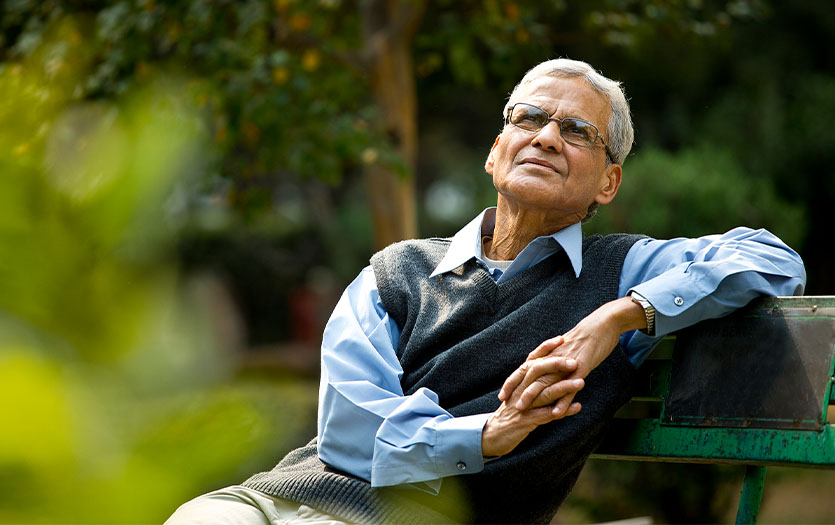
Enjoy this monthly mindfulness post from Dave Johnson, PhD, CNS- BC, LMFT, Employee Assistance Specialist.
In newspapers, journals, books and other media, mindfulness is earning recognition for its health benefits for physical, emotional and spiritual well-being. Everything from stress management to heart disease, cancer, pain and addiction benefit from a mindfulness practice. I like to also connect the dots for employers that such programming also relates to workplace issues, such as the prevention of burnout, safety programming, enhanced creativity, innovation and leadership development. As a corporate trainer, I introduce activities to highlight some of this awareness.
To start, I have individuals recall their days practicing the childhood ritual of crafting paper airplanes. Children develop a keen awareness for sleek design and pointed and sharp angles that easily can be launched and soar through the air. Sometimes kids compete with each other to see what design could fly the farthest. Passing out a single sheet of paper and giving the group the instruction to make an airplane that can fly the farthest engages workshop participants in this familiar, nostalgic activity. Within a minute or two, adult men and women are laughing and focused, some with great design and precision, others with an awareness that this is a skillset that perhaps they did not achieve in earlier childhood development.
As I have the group come up one at a time to the front of the room and launch their planes from a specific starting place, the excitement builds. Laughter and playful competition from leaders emerges when some planes go great distances and soar, while others awkwardly drop to the floor. Vulnerability, play, competition and design emerge as each plane is released. As the last participant of the activity, I move to the launching pad and take the single piece of unfolded paper so that all can see me simply crunch it up into a ball. I launch it easily and it moves beyond others in the friendly competition. This always gets a good laugh. Then we quickly move into a circle to process how the exercise might animate insight or is connected to concepts about mindfulness and leadership.
To start our reflection, a quick review of Dr. Jon Kabat-Zinn’s definition of mindfulness includes: “paying attention in a particular way, on purpose, in the present moment, and nonjudgmentally.” Often we think of mindfulness training as looking like folks sitting on yoga mats, eyes closed, slowed breathing, quiet and very serene. But taking our mindful practice off the mat includes bringing a nonreactive presence to our everyday living, creating, and leading. Highly effective leaders bring this presence with emotional intelligence and the ability to interpret the context of a situation as it emerges, improvise and help others to cope and thrive.
And so we reflect on the paper airplane exercise with eight questions for highly effective leaders to ponder within themselves, teams, journals and prayers:
- Patterns and creativity. How does one’s knowledge and previous patterns interfere with the present situation and intention to create something new?
- Non-judgmental. How does competition spark creativity and fun, but also heighten a sense of vulnerability, fear,or being judgmental of ourselves and others?
- Nonreactive practice. Where and how do can one learn to cultivate being present, self-aware and non-reactive to the fight, flight, freeze components of stress when confronted with a challenging situation that requires leadership?
- The watcher and curiosity. How can we become a better “fly on the wall” and intentionally lean into all senses (seeing, listening, touching, tasting, smelling, interoception and proprioception) to observe and feel what is happening in reality versus making assumptions based on the past and really just thinking about what is happening?
- Letting go to soar. When one releases and let’s go of old stories, hurts, self-doubt, perfectionism, etc. in a tangible way, how might that free up the notion of being present and having improved relationships in one’s personal and corporate team life?
- Cultivate and practice. Who can mentor and what are the resources needed to help learn the practice of mindfulness and the application for leadership in teams?
- Leadership and flow. How can metaphor such as the soaring and flow of a paper airplane engage our teams to take a fresh look and new lens to discover hidden truths of expanding awareness to not only cope but thrive with messiness, ambiguity and change as required by leaders?
- Resilience. Mindful leaders have been described as having moxie by leadership gurus such as John Baldoni*. How does doing things differently, with courage and gumption, hold the secret to bold and gutsy leadership?
“If you always do what you always did, you will always get what you always got.”
― Albert Einstein
Other resources:
www.InvisibleInklings.com (sign up for free monthly word-based mindful healing exercises) from Dr. Dave Johnson and Kathy Curtis, healing artist.
For a free 1:1 in person or phone consultation with Dr. Dave or to find out about more on Mindfulness & Stress Management programs, contact the Parkview Center for Healthy Living at (260) 672-6500. Dr. Dave also provides on-site guidance for teambuilding and transformational leadership, among other topics. To learn more about Employee Assistance Programs for your company, call Business Development at (260) 373-9013. Mindfulness-based stress reduction (MBSR) practice has been extensively researched and proven helpful for coping with stress and change, grief, healthy eating patterns, pain, anxiety, depression and many other chronic disease and autoimmune disorders.
*Baldoni, J. (2014) “Moxie: The Secret to Bold and Gutsy Leadership”



